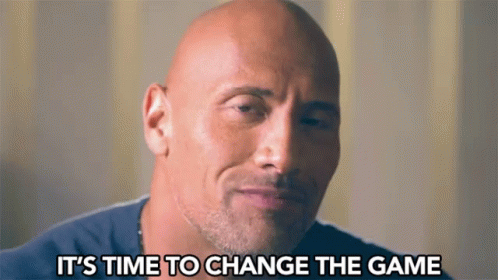♟️ When is it time to change a strategy?
Marketing strategies are not for eternity either. They need revisions every now and then. I'll explain when and why here.
Hi 👋 I’m Florian Schleicher. This is the FutureStrategies newsletter of FUTURES. Thank you so much for reading along 💚 If you want to learn strategic marketing from me, then my Simple & Sustainable Marketing Academy is the perfect fit for you.
"How often do you change a marketing strategy?"
A start-up founder asked me this question last week during a mentoring session.
Exciting, that's a new question!
And after I was invited to a panel discussion by Strategy Austria beforehand, which was also about strategies, I thought I'd devote some time to this topic again.
So I've been looking at this in a bit more detail this week - so here's my answer to this big question, with a few framework questions that I think are important:
What is a strategy?
Why do companies need a strategy?
How do strategies come about?
How often do you change a strategy?
What does it mean for companies?
Here we go.
♟️ What is a (marketing) strategy?
A strategy is not a collection of PowerPoint slides, a nice story or a few smart sayings the team says to each other.
A strategy is the process of identifying the best way to get from A to B.
There is always a problem between us (A) and where we want to go (B):
“A strategy is a design of action and policy that’s aimed at surmounting a high-stakes challenge. It’s a way of dealing with a problem.”
Richard Rumelt
Strategists therefore love problems.
The core problem of marketing strategies is usually that the target group must be reached. And not just once in the short term with a creative content, a trendy posting or a funny headline, but in the long term.
Target groups can be consumers (B2C), other companies (B2B) or even politicians and legislators (B2G).
Most companies, whether small startups or large corporations, surprisingly don't have a proper strategy, let alone a marketing strategy:
“Instead, they have multiple goals and initiatives that symbolize progress, but no coherent approach to accomplishing that progress other than “spend more and try harder.”
Richard Rumelt
It always surprises me what passes for a "strategy" and how much "fluff" - i.e. nicely prepared, inflated or esoteric arguments - is used.
For me, a really good marketing strategy always consists of three core elements:
A diagnosis that describes where we are right now and what the needs of our target group are.
Guiding principles, in the form of a vision and 2-3 strategic goals, which give us a direction like signposts.
Coherent actions that bring our strategy to life, because as Simon Sinek said the other day: Without actions, we only have words.
The right words and abbreviations are crucial so that essential elements can be remembered. Strategies define how we deal with problems. And this always involves change - otherwise we would already have arrived at the B point. The bottom line is that a strategy has the task of guiding our actions, making decisions stringently and achieving our goals in the future.
“So if strategy is about change, it is unnecessarily and unavoidably about the future. The arrow of time travels in one direction only. But while strategy is pointed at the future, it begins with an understanding of the here and now, with information, knowledge, understanding, and insight.”
Martin Weigel
🎯 Why do companies need a (marketing) strategy?
Simply put:
Marketing without a strategy is like cooking without a recipe.
Sometimes it works - the more experienced we are, the more likely that is - but often it doesn't produce the desired result that tastes right to us and hundreds or thousands of others.
Marketing also has a big problem: the human attention span is decreasing more and more and with the multitude of information and news, it is incredibly difficult to convince the right target group of yourself and your brand in the long run.
For illustration: According to Psychologist Timothy Wilson, we are able to consciously perceive about 0.0004% of the information that hits our brain at any given time.
So a strategy has the task of solving this problem for us.
Today and in the future:
“Brand strategy is identifying what’s the best way to get this brand to succeed over the next few years.”
Fred Pelard, Autor von “How to be strategic”
If you don't have a clear strategy, you run the risk of running empty miles, relying on the wrong channels, investing budgets incorrectly, losing money, and ending up with an unachieved goal - or worse, a non-functioning company or startup.
You think your strategy needs an overhaul or a rework?
That's exactly my specialty at FutureS.
🗺️ How do strategies come into existence?
A good strategy starts at the point where we are now (A) and then moves on to define a desirable future (B).
As described above, we need to start by understanding our target audience and what drives them.
“The mindset of our target audience, meaning, who are the people this business is most for? This is less about demographics and more about identifying the attitudes and behaviours that define the people who will care about this brand the most.”
This is where we need depth.
It's not enough to simply say, "People want to eat a sweet snack."
We need to understand the need behind it.
And ideally, we'll come up with an insight as great as Snickers:
Strategies emerge from long-term thinking.
A good marketing strategy is future-oriented - that takes a lot of experience and imagination:
If a problem is really strategic, the answer to it lies in the future. When something is strategic, you’ve got to first invent solutions for it because it’s in the future and you won’t find any data on it. You can’t analyse the future.
A podcast recommendation at this point: “To build strategy, start with the future.”
It's not about closing the next quarter with record figures, but about ensuring the successful existence of our brand for the next years and decades.
And that now brings me to the introductory question:
🤔 How often do you change a strategy?
Now that you've read this far, I'll keep it short:
In my view, a good marketing strategy is designed for the next five years.
That means for five years our vision guides us, gives us answers to everyday questions and leads us to the achievement of our goals.
Strategy processes are time-consuming, intensive and directional projects. Anything shorter than five years is not sufficiently responsive to changing conditions (change as the only constant) and causes more effort than benefit.
What is needed in between, however, are strategic check-ins - after all, we need to know whether we are still on course. In doing so, I always recommend bringing in an experienced outside perspective to these semi-annual camps.
However, there are some exceptions that require a realignment or even a complete revision of a strategy.
We are not achieving our goals.
If we repeatedly fail to achieve the goals we have set, then the strategy does not seem to be optimally aligned.Consumer behaviour is changing a lot.
This can have various causes - CoVid has had a lasting impact on the restaurant market, inflation is leading to new price behavior, and geopolitical as well as environmental crises are making people rethink their priorities.Technologies are moving the market in a new direction.
Here I am talking about megatrends: social media has completely changed our media consumption and the roles between companies and consumers. Other trends like AI or the metaverse are not there yet in my view, even if many colleagues see it differently.Laws make our strategy obsolete.
The GDPR has made it difficult for many organizations that have wildly collected addresses or phone numbers (including many NGOs) to maintain their strategy. Something similar will happen with the new EU directives around green claims and sustainability reporting for many companies.
Global conditions demand adjustments.
We have finite resources - so many companies need to revise their strategies geared to endless growth. As one brewery puts it so well in its strategy: We protect the only planet with beer. And yes, marketing can help achieve goals and sustainable growth. I wrote about that here.
🔮 What does that mean for companies?
Every start-up, every brand, every large company needs a marketing strategy.
And people who can think strategically so that it not only comes into being, but is also stringently implemented and evaluated time and again.
That's not always easy.
“Writing strategies is hard and takes time. Even the best brands revisit and revise.”
Jeff From, The Purpose Advantage
But the good news is:
Strategic thinking can be learned.
“Being strategic is a skill. Like sudoku, taking selfies or flossing your teeth. Some people are born great at it. But everyone can learn the techniques and become good at it quite quickly, and better over time. At its core, being strategic is a mindset. It’s a way to solve problems.”
Fred Pelard
The second piece of good news is that there are experienced experts who can help.
And, there are formats that help you understand the basics of strategic marketing and apply them yourself - like the Simple & Sustainable Marketing Academy from FutureS, an innovative learning format that teaches exactly that in just four months and with many practical examples.
So you can always get support and expand your knowledge.
Thanks for reading!
PS: You can also read this posting in German.
🍀 Something good 🥤
Every year, 13 billion disposable cups and containers are consumed in Germany. A quick coffee and a few minutes later the container ends up in the trash.
However, the start-up Recup has developed a clever solution to this:
Because their reusable cups and bowls replace thousands of disposable containers in the course of their life in already more than 21,000 cafés, restaurants, bakeries, gas stations and kiosks throughout Germany. All you have to do is order your next takeaway drink or meal in the reusable container.
🌱






